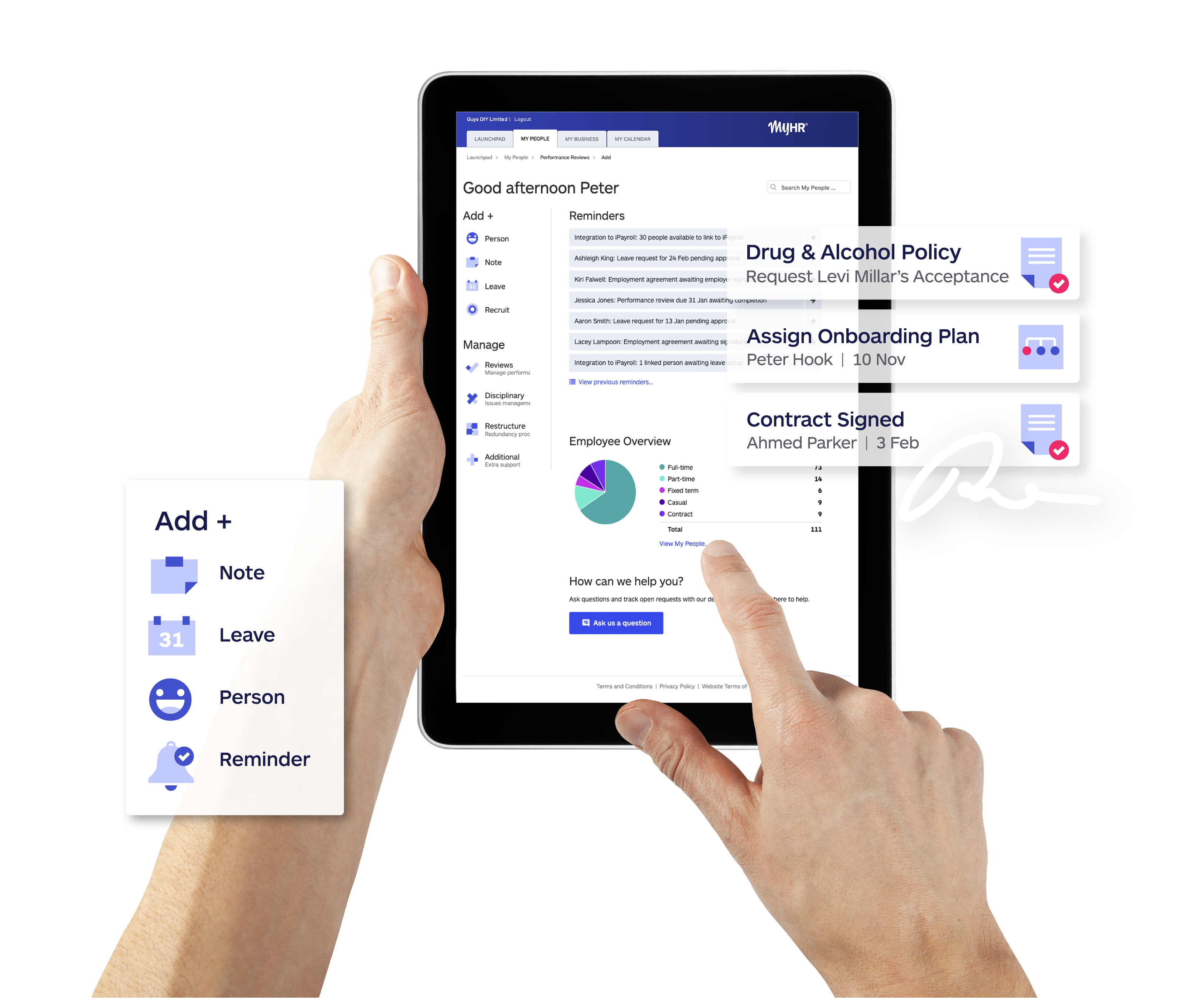Recruitment can be an unpredictable process. There might be times when you post a vacancy for a great role and applications only trickle in, while at others, you drown in a deluge of CVs from a range of candidates with wildly different backgrounds.
Having few candidates can present its own issues (most notably: will anyone be suitable for the job?) but being inundated with applicants means you’ve got a lot more work to do to whittle them down and find the best match for the role and your organisation.

Here is our best-practice advice to help you handle those sack loads of applications, avoid common mistakes in the hiring process, and find your next star employee.
Hiring your next employee is the most important thing you’ll do this year
The first thing to say is, congratulations, your business has a newly created role or you’re confident enough to be replacing a member of staff as they move on. Not everyone is in this fortunate position, so feel good about it.
Hiring a new member of your team is an important investment and means you’re adding value to the business, so be prepared to give it the priority it deserves.
Recruitment best practices
Job ads: Don't undersell the role
The first step in the recruitment process is properly defining the role and crafting an excellent job advertisement.
Writing job ads is not always something employers are good at and we’ve seen a lot of people make bad hires due to getting the job ad wrong, especially if it doesn’t describe the role and instead focuses on what the ideal employee looks like.
Remember, developing an effective job ad is as much about selling the potential candidate on the role and the organisation as it is screening for the right hire.
Try to describe the job so that people can visualise themselves in it, and mention the benefits early on.
Include a screening question
Employers often make the position description too broad. On one hand, you may receive a high volume of applications, but on the other, many will be unqualified or a bad fit.
Less is more when it comes to applicants and if you get a lot of applicants without the skills the role requires, that’s telling you your ads are wrong.
Including a short questionnaire in your job ads that’s tailored to the job’s needs can quickly help you weed out unsuitable applicants.
For example, a vacancy for a packing job could include a question like: Are you physically fit, and able to spend an 8-hour shift on your feet and carrying boxes up to 20kg in weight?
As well as describing who would suit the job, also make it clear who wouldn’t. Talk about your industry, the challenges within it, the role's day-to-day tasks, and some of the worst things about it.
You don’t want someone starting the job and saying: ‘This wasn’t what I expected’.
Use applicant tracking systems
If your job ad attracts a lot of applicants, or you’ve posted to a number of job boards, applicant tracking systems (ATSs) can help manage and automate candidate communications.
But if you don’t recruit enough to justify a subscription to one of these systems, most of the main job boards contain candidate management tools such as bulk email actions.
If you’re working with a recruiter, they will have an ATS, and if you’re hiring more than 6 times a year, it may be worth having a standalone ATS. The main benefit of a standalone ATS is that a business can receive applications from multiple job boards (like Seek and Trade Me Jobs), have them collated in one place making candidate comparison and follow-up a breeze.
Respond to each application
One mistake you want to avoid is failing to respond to applicants, no matter how many applications your job listing attracts.
Job applicants could also be your current or future customers (or employees), and these days companies' consumer brands and employment brands are inextricably linked.
Not responding to applicants can cause resentment and harm the company's reputation.
Acknowledging that a person took the time to apply and showing gratitude is all part of what builds your brand. And if you’ve interviewed a candidate, extend them the courtesy of a follow up phone call to let them know they haven’t been selected for the role.
Phone-screening helps cull candidate numbers
Another leaf you can take out of an experienced recruiter’s book is to review each CV as it comes in and move immediately to call up any candidates who seem suitable for a quick screening call.
Phone screening only takes a few minutes, and experienced hiring managers or recruiters can often tell after a quick call whether the candidate is worth inviting to the next stage of the interview process.
Ensure your prescreening questions are standardised for each call, and you are asking questions that provide you with valuable information. Phone-screening is meant to be brief and high-level, so don’t worry about getting too deep into a candidate’s background.
When phone-screening applicants, hiring managers should look for:
- Relevant experience.
- Genuine interest in the role - ask the applicant to describe what about the role interests them most.
- Eligibility - check if the person is permitted to work in the country, they have relevant qualifications for the role, they live close enough to the job’s location (if on-site), etc.
After you have completed a phone-screening call, you can easily invite candidates to an in-person interview, or let them know that they weren’t the right fit via email.
Consider some outlier or over-qualified applicants
When a candidate with senior experience applies for a mid-level or even junior job, it can raise some eyebrows. But it’s worth giving them a quick call to see what their motivation is. You’ll be able to explain the level of the position, the pay and benefits, and see if they’re still interested.
It can be intimidating having a senior candidate apply for a mid-level job, but don’t judge a book by its cover. People’s lives can change and they might want to go on a different journey or change pace or focus for a while.
When you have a lot of high-calibre candidates, it can give you access to greater levels of experience and talent, possibly at a more affordable salary range.
Hire for both aptitude and attitude, and consider some outliers among the applications you see. Sometimes your best hires turn out to be people who don’t seem typical. They may have the skills but not all the experience required, or they may have the right attitude and match the cultural fit, and can learn the position’s requisite skills on the job.
Benchmark your remuneration package
Offering a competitive pay package is an important part of attracting and securing good candidates. Small businesses often find it hard to access current salary data, which is where a recruitment agency or HR solution, like MyHR, can really help.
MyHR can provide accurate guidance on what the competition is paying and our HR team is expert at building attractive remuneration packages for your whole team.
Remember, pay is only one factor that will bring people in your doors. If you can’t afford to pay top rates, then think about all the other features of the organisation that an employee might really value, e.g. perks and benefits, a strong culture, or your mission.
Don’t fudge the interview process
After having gone through all the hard work of drawing up a shortlist of candidates you’d like to interview, make sure you approach the interview process with care and thoroughness.
A casual chat is not appropriate and there’s plenty of evidence to prove it isn’t an indicator of performance.
Adhere to a good interview guide, which will help you gain proof of why this person might be a good match to the role based on what they’ve done.
With SMEs, it’s all about skills and culture fit. Hiring a new person is such a huge commitment, you can’t afford to get the wrong fit.
Ask a question like: ‘Our culture is really important to us and our values are critical to our culture. One of our values is transparency. What does that mean to you and how have you demonstrated this in the past?’
You’ll have a number of interactions with the candidate to make sure they’re a good cultural fit. So, on another occasion have them meet their peers at the business, too, and then if it’s a technical role, test them on their skills, or give them an assignment.
Finally, reference checks are very important. These are often so cookie-cutter, the referee will only say positive things. If the reference has any reservations or negative feedback about the applicant, that should be a red flag.
Be smart with your questions. If you confront a referee about a candidate, people can’t flub. Are they giving a politician’s response or are they being genuine?
Bonus tip: If you use a recruiter, make sure they know your industry
When looking to fill a new role, you’ll have to decide whether you’ll handle the recruitment process yourself or use a recruitment company to help.
A traditional recruitment company will typically charge you a referral fee (e.g. 12-18% of the placed candidate’s base salary) and often include a free replacement guarantee (e.g. 3-6-months) to re-recruit the role if the person doesn’t work out.
There are other agency models that charge for the recruiters’ time and expenses, but add no placement fee at the end.
If you outsource the recruitment process, make sure it’s with a specialist not a generalist. Using a specialist recruiter who knows your sector well, and has current networks and knowledge, can provide you confidence that they know what and what not to look out for in applicants.
Also, consider partnering with a recruitment agency that encourages a collaborative role in the hiring process, allowing you to see candidates in the funnel, and highlight picks they might have missed.



